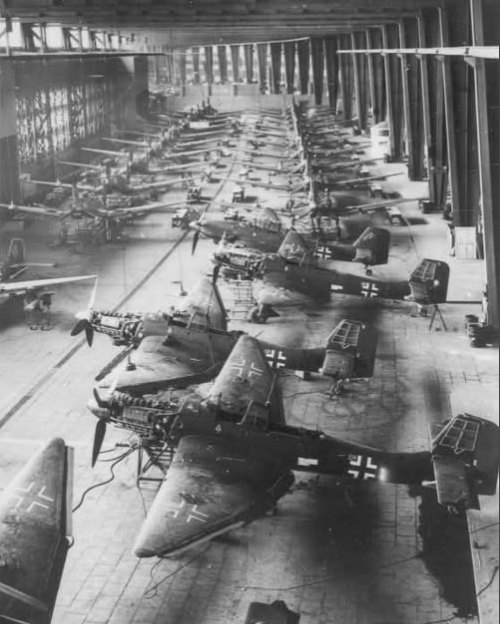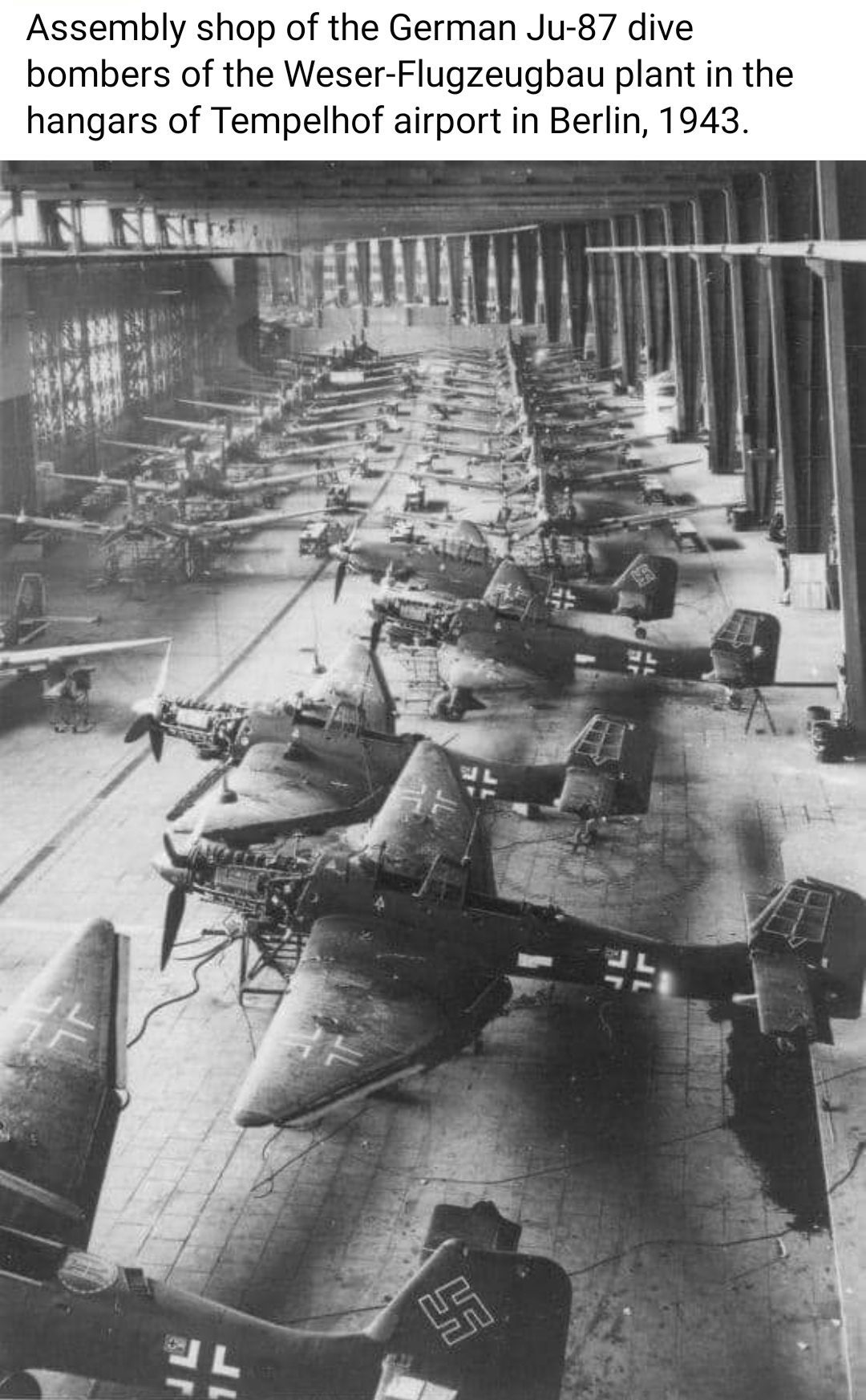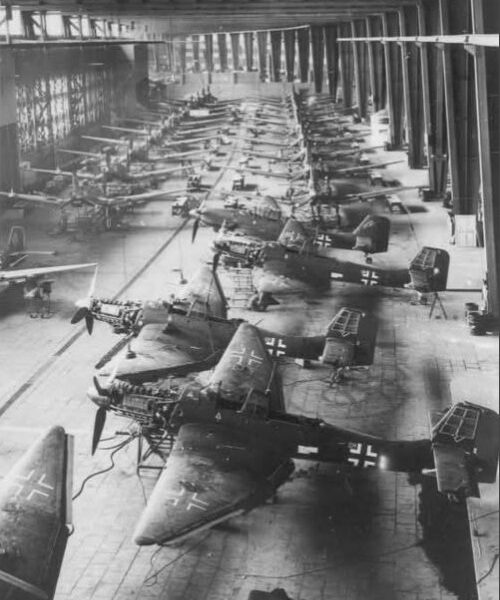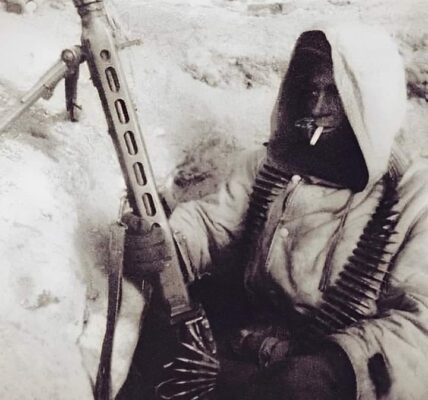Assembly hall of the German dive bombers Junkers Ju 87 “Stuka” of the Weser aircraft construction plant in the hangars of Tempelhof Airport in Berlin in 1943! _de

In 1943, Berlin was a center of the German armaments industry, and one of the most famous weapons produced during this period was the German Junkers Ju 87 dive-bomber, better known as the “Stuka.” This aircraft, notorious for its precise and deadly dive-bombing capabilities, played a crucial role in the early years of World War II. Of particular note is the production of the “Stuka” at the Weser aircraft factory, located in the hangars of Berlin’s Tempelhof Airport.
The assembly hall where the “Stuka” was manufactured was a technical masterpiece of the war industry. The Weser aircraft construction plant was one of the most important companies in the German aviation industry and specialized in the production of military aircraft. Tempelhof Airport, a strategically important air traffic hub in Berlin, was not only a civilian airport but also a key site for aircraft production and maintenance during the war year of 1943. Hundreds of “Stukas” were built, maintained, and prepared for deployment in the hangars of this airport.
The Junkers Ju 87 was one of the most distinctive and feared aircraft types of World War II. With its distinctive drooping wings and the dramatic “Jericho trumpet” sound produced during dives, it was capable of precise and devastating bombing attacks on enemy targets. Especially during the early stages of the war, such as the Battle of Britain and while supporting the Wehrmacht in North Africa, the “Stuka” became a symbol of the Third Reich’s air force.

Due to its central location in Berlin, Tempelhof Airport was an ideal location for the assembly and maintenance of such aircraft. Thousands of engineers, technicians, and workers worked in the airport’s hangars to assemble the “Stuka” with utmost speed and precision. This production process symbolized the complete mobilization of the German economy for the war effort.
Despite the successes the “Stuka” enjoyed in the early years of the war, it was increasingly vulnerable to developments in air warfare and the superiority of the Allied air forces. Nevertheless, the production of these legendary aircraft at the Weser aircraft factory in the hangars of Tempelhof Airport remains an important chapter in World War II aviation history.










